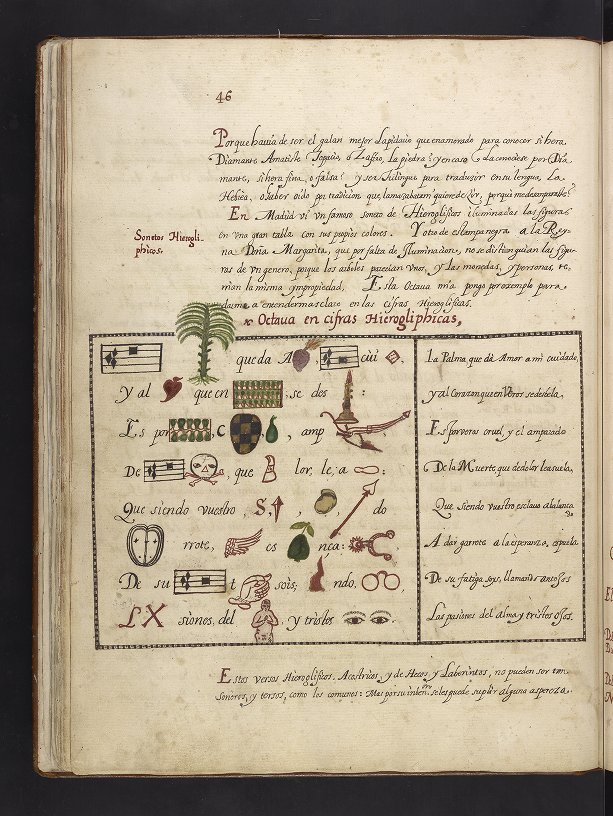
a
palma
mor
a mi.
dado
corazon
voros
bela
voras
ruel
yel
parado
la
muerte
dedo
suela
clavo
ala
lanto
adarga
ala
pera
espuela
ojos
alma
aspa
antojos
llama
iga
fa
Dos Discursos de la Cifra
Un [a] [Palma] que da A[mor], [a mi.] cuid [dado]
Y al [Corazon] que en [Voros] se des[bela],
Es por[voras] c[ruel], [y el], amp[parado]
De [la] [Muerte], que [de do]lor, le a[suela],
Que siendo vuestro [S][clavo][ala][lanto]do
[Adarga]rote, [ala] es [pera]nça, [espuela]
De su [fa]t[iga] sois, [llama]ndo [antojos]
L[as pa]sionos del [alma] y tristos [ojos]
Date: c. 17th century
Description: Manuscript; 82 leaves; paper, col. ill. ; 372 x 280 (279 x 180) mm; bound to 380 x 290 mm.
Language: Spanish
Repository: Kislak Center for Special Collections, Rare Books and Manuscripts, University of Pennsylvania
Tags: 17th-century, early writing, love, manuscript, Spanish
Two works on ciphers. The first is more theoretical and describes ciphers based on subjects such as arithmetic, non-Roman alphabets (Greek, Hebrew) and writing systems (Egyptian, Chinese, Japanese, the writing of Indians of New Spain), astrology, musical notation, geography, currency, orthography, armorials, emblems, and enigmas. The second is a technical description of 24 different methods of enciphering and deciphering, using numerous tables, volvelles, movable sleeves, and grilles. Most of the entries in the index at the end of the manuscript (p. 165-166), which is in the same hand as the text, refer to subjects in the first work. Written by a cryptographer in the service of Martin de Cordova, viceroy of Navarre (p. 5), and dedicated to Juan Fernandez de Velasco, Condestable de Castilla (p. 3), a Spanish official who held government posts in Italy.
Described in Transformation of Knowledge: early manuscripts from the collection of Lawrence J. Schoenberg (London: Paul Holberton, 2006), p. 47-49 (LJS 423).